Sony F55 Review & Music Video
The music video for “DEJA – Struck by the Light” came around at the right time to make it a camera test for the brand-new Sony F55. The target audience for the song are teenage girls, and I think few of my readers fall into this target group, so I don’t blame you if the music is not for you – but if it is, please support the artist Deja by buying the song via iTunes or Amazon.
Also, please enjoy Patrick Zadrobilek’s brilliant behind-the-scenes video, shot on the Canon C100:
The new Sony F55 was one of the most anticipated cameras in a long time, because telling from the specs, it ticks almost all the boxes. It seems like a camera which tries to please everyone: 4K, 2K and 1080p raw and compressed, without crop factors, high speed recording of up to 240 fps in 2K, SLog2 curve with a huge latitude, a global shutter (!) and the Sony FZ mount which (like the F3) gives you extreme versatility with mount adapters, allowing you to put almost every lens you have ever seen on it (provided you have the right adapter, but it’s possible). And apart from all that, ergonomically one of the first cameras in a very long time that sits on the shoulder just as-is, without any huge rig that you have to build around it.
The technical specs were overwhelming and everything sounded almost too good to be true, so like many others, I was really looking forward to get my hands on the camera as soon as possible.
Finally, after some delays, I was able to actually have a good close look at it in a studio test environment. As part of the preparation for a new regular TV documentary series, the production company is eager to decide for a camera model that will serve them well in the years to come, and that’s why they had us compare several models in different setups. Part of the results to this test were already published on cinema5D by my buddy (and one of my cinema5D partners-in-crime) Johnnie Behiri, check the comparison between the F55 and the 1DC out here.
Since that test, I had more opportunities to use the camera in different circumstances. Two TV documentary features (which will be published much later in the year), and the other one was a music video that I have been asked to shoot by director Jan Frankl, a very talented young director I have worked with for the first time sometime last year for another TV comedy programme.
Struck by the Light – Struck by the Light – Single on iTunes
Notoriously low budget (as most music video shoots tend to be these days), we decided to pull off something more ambitious by shooting with the brand-new F55, and pulling a lot of favours of crew members who were willing to work for low or no pay simply because they wanted to see how the new beast really performs under tough conditions.
And boy, we did pull the F55 through its paces during those one and a half days of shooting.
Gear used apart from cameras
Biggest thanks go out to Pro.Media and Juraczka, the Sony pro dealers that loaned us the camera, accessories and the terrific Cooke Panchro Mini Primes that we used for this shoot. If you are looking for great deals on either rental Sony equipment in Europe or if you are looking to buy, contact them! Very knowledgeable and always helpful.
Lighting gear was supplied by my dear friend, fellow DP and Steadicam operator Alexander Boboschweski with his KFlect system, the great reflective lighting system we already used on the production of the C500 short “ALEX”.
The dolly we used was the terrific CamDolly, the most versatile dolly system I have EVER used. You can see us using it mainly in the club, both on stage behind the singer and behind the audience pointing at the stage. I used it in the “maximum version”, the sit-down dolly, but it’s versatility is unmatched by any other system – you can reduce this thing to a bare minimum table top dolly and it really comes in many sizes. Check out the details on the website. There’s promo right now on the whole system which can get you the full system for less than $2,400 – I tell you (and I am saying this because I mean this!!) – an INCREDIBLE value for money. It’s rock solid.
Vocas supplied us with a prototype of their F55 rig and I loved it. Their wooden handles are unlike anything else on the market, so incredibly comfortable even for longer periods of shooting from the shoulder. Their entire F55 base plate and top handle makes the camera much sturdier than the normal Sony grip gear supplied with the camera.
I also used a VBag Philip Bloom Edition for the camera moves parallel to the street when following the singer after she leaves the cupcake store. It gave me great camera support in a moving car, a very efficient piece of kit – watch my review video by clicking here and get 5% off by using the discount code “ninofilm” on the website.
Global Shutter vs. Rolling Shutter
For me, one of the most intriguing features of the F55 is the global shutter at which the CMOS sensor operates, simply because this is something unheard of from other cameras. Over the past 5 to 10 years or so we have all become used to the amazing features that CMOS sensors offer us: relatively cheap sensors with an amazing low-light capability, also allowing manufacturers to produce larger chips at much smaller prices than used to be possible with traditional CCD sensors.
However, the CMOS technology (so far) had a few major downsides that limited their ability to shoot with them: Fast movement either through the frame or with the camera itself can lead to the “rolling shutter” effect, where buildings and objects seem to tilt to one side during the camera movement. This is because of the fact that the sensor is read out sequentially line by line, rather than at once. Also, flashes and very short light eruptions in the frame lead to an effect where only half of the frame is lit at a particular point in time. When I saw this the first time on my EX3 4 years ago, I was surprised – up until then I had mainly worked with CCD cameras which don’t suffer from that problem – but then, like many others, I quickly got used to it. It’s strange how often you see this problem on TV news reports these days (where, naturally, very often a lot of flashes are being fired off in the frame) – yet people just got used to this weird issue, so they almost don’t see it anymore.
In other words, with traditional CMOS sensors, you can’t shoot really fast movements and flashes look awful. When I first saw it years ago I was taken aback, but somehow we all got used to it – DSLRs like the 5D Mark II (and III) suffer the most from it because they are not optimized to shoot video, even the 1DC has a rolling shutter that is much worse than, say, from the C300 or C100. But you can go all the way up to the Epic and the Alexa, and to a (smaller) degree, the effect is there too.
The F55 changes that all: It’s the first CMOS based camera I know of that reads out the entire sensor at the same time. Its smaller sibling the F5 (which comes in the same body, but sports a different sensor) still has a rolling shutter. (The 4K Blackmagic S35 camera is said to come with a global shutter as well once it ships later this year.)
According to Sony, the F55 is a tad (a stop or so) less light sensitive than the F5 because of its global shutter, but that’s a sacrifice that I am more than willing to make considering the still incredible light sensitivity of the camera.
Global Shutter & XAVC codec test
In the music video shoot, we tried to test the global shutter as well as the XAVC 4K and 1080p codec in circumstances that are tough for every camera.
First of all, we filmed running scenes with our lead actress Deja, and I wanted to shoot them only parallel to the street. First of all that allowed us to improvise without permissions for these locations, because we were able to pick some quiet corners in Vienna during the shooting weekend and film her running in several locations without much hassle. Secondly, I thought the fast parallel movement would be a great test for the global shutter, and it turned out great – no bent lines, just like you would expect. It’s funny that over the years, with so many cameras that have trouble shooting something like this, you kind of develop a gut feeling of what is possible and what isn’t, and considering the conventional CMOS cameras my gut told me “it won’t work”. It looks like it’s time to rethink the limitations of CMOS technology in the future.
One of Sony’s strengths has always been the fact that they think in full solution pipelines rather than individual products. As giant as they are, they are one of the few electronics companies in the world who are capable of doing something like that. In accordance with that tradition, Sony not only announced the F5 and F55 cameras, but also loads of accompanying accessories and also a completely new codec family for efficient compression of high-quality footage in 1080p, 2K and 4K. XAVC is the name of Sony’s new codec family, and after our music video shoot, I can safely say that it’s a very future-proof offering indeed. We shot mostly XAVC 4K (for all real time stuff), and XAVC 1080p for high speed recording (50 and 60fps). (However, the grade was finished in 1080p).
The cool thing about this camera: XAVC 4K and 1080p blend seamlessly on a 1080p timeline. Sharpness is similar when downscaled to 1080p, with the 4K being only a little bit cleaner. There is a lot of nice wizardry going on inside this camera for that, and I’m sure a lot of it has to do with processing power. The sharpness of this camera is incredible no matter which resolution you use – it’s so sharp that it’s hard to match it with some other cameras, always keep that in mind.
XAVC vs. raw
Although we had it, we did not shoot 16 bit RAW with this camera on this project. That’s the thing with raw, for me at least: when you don’t have it, you want it. When you finally have it, you seriously don’t need it anymore. Our C500 test short “ALEX” (click here to see it and read my camera review) produced 1TB of data for 1 hour of 4K footage in Canon Raw. It was an enormous pain to work with in post production. Of course if you need it for special shots, it’s great to have, but hey … I think that goes for about 0.1% of all the stuff I shoot, to be perfectly honest. In a normal production environment where you have a budget and you have to meet deadlines, raw is not an option. Efficient compression is the future, and that’s where XAVC really seems to shine.
Light sensitivity, ISO’s & the “blue stage light” issue
Having little experience with the camera’s sensitivity, I was initially hesitant to push up the ISO too much – but shooting the running scenes guerilla style without any additional lighting on the street (impossible to put up lights on the street without permissions), I had no other choice. In these street and also during the disco scenes we ramped it up to 4000 and 5600 ISO, sometimes even higher, and I was amazed how remarkably clean the footage still turned out. There is a little grain, but it looks quite organic and therefore not really sticking out. If anything, I would say the camera is sometimes even too clean if you are heading for a “film look”. It’s quite apparent that with the latest camera generation from most manufacturers the sensitivity of film stock was definitely long left behind. I think we are – like it or not – heading to a new aesthetic as digital cinema cameras deliver more and more details that we were never able to see on “film” before. For now, the impact is small, but our habits of perception will change with the technology itself.
Anyway, I digress:
The F55’s native ISO is 1250, although I have learned to doubt the comparability of ISO numbers – while not having tested it, I think the ISO1250 of the F55 is not much brighter than the native ISO850 of the C100/C300/C500 (in C log mode). It looks very similar. My good friend Mario Feil posted a video in which he compared the ISO sensitivities of the C300 with the 1DmkIV about a year ago – and the differences of the cameras couldn’t be more apparant – the maximum ISO of the C300 is 20,000, and it looks about the same as ISO 6,400 on the 1DmkIV.
So, as you can see, ISO doesn’t seem to be a standardized value after all, because the same ISO’s on different cameras look VERY differently. There is no other way than to compare them side-by-side and judge it by yourself.
In any case, the higher ISOs on the F55 prove to be very clean and the noise that’s there has a very filmic quality – it’s not colourful like it is on some of Canon’s cameras (though it’s mainly the older DSLRs that suffer from that), but very similar to the F3’s noise pattern (when using an external recorder with SLog).
We ran into one big issue with the camera when shooting the dance scenes in the club: like most other Sony CMOS based cameras that I know, it seems like it isn’t able to deal with blue stage lights very well. The spectrum of these lights seem to cause real trouble to the sensor – everything appears over-saturated and even burned out, despite the fact that it’s not overexposed. Look at the last few shots in the video where we really used these lights prominently. The effect is extremely strong. In some shots you see only a spot of it in the background and it sticks out enormously. We decided to go for it despite the extreme effect, and we tried to reduce it during the grading, but it didn’t really work well. It’s a bit disappointing that the F55’s sensor still suffers from that problem, because I remember Sony cameras have had issues with that for a long time – when shooting concerts, I ran into the same problem with my EX3 years ago.
Interestingly, when you look at the behind the scenes video (which was shot with the Canon C100), there is no sign of this problem and the Canon seems to deal with the blue light in a much better way.
ND filters
The F55 has two stages of ND filter built in, 0.9 and 1.8. It’s essential to have built-in ND filters in a camera like this if you use it for documentary purposes like I did frequently – it was however not necessary for this music video production.
On the documentary pieces I shot with this camera I came across one major problem with the ND filters – in bright daylight, even ND 1.8 is not strong enough at the base (and native) ISO 1250. If it’s a really bright day, you end up shooting at f/8 with the ND 1.8 to get correct exposure. You would need to stick additional ND filters in a mattebox or use a vary ND in front of your lens – both are not an option for many applications and I would much rather see Sony built a third ND directly into the camera. This IS a real design problem in my opinion. Sony managed to put more ND’s into some of their bigger XDCAM ENG models, so there is no reason why they didn’t do it here.
Settings and menu design, planned upgrades
Sony has released an extensively detailed road map for firmware releases for this camera, which goes well into 2014. Check it out here:
While it’s nice of them to provide rough dates regarding when a particular feature will be enabled, it’s also very frustrating to work with the camera at this stage when some of its biggest selling points are not working yet.
For instance, right now, the camera can only do 60fps in 1080p. It will be able to record up to 180fps in XAVC 2K/HD internally later in the year, and 240fps Raw with the optional AXS-R5 raw recorder (which we didn’t use for this production) also by the end of the year.
With the menu in the current firmware version, you feel that Sony is still working on a lot of the stuff – the performance of the menu is sluggish (though it indeed got a lot better after the first few firmware updates, and all of them are always available free of charge, which is also new for Sony). A lot of very important menu points are hidden away deep in submenus and so I think there is still a lot of space for optimization. The menu really could use a rearrangements with some of the most important settings positioned more prominently.
For example, when we started this production, we were unaware that there is a separate setting for the color gamut that has to be adjusted in order to get “ultra wide color gamut”. We assumed that’s all part of the Slog2 setting (Sony’s evolution of the Slog we have grown to love from the F3), but it isn’t. So we ended up shooting the entire music video in the “normal” color mode, because I didn’t want to change everything half way through the production. This resulted in images already being more saturated when coming out of the camera (yet nowhere near as saturated as footage from standard and even “neutral” settings in common DSLR cameras). Nevertheless, of course this reduced the amount of color adjustments we were able to make in grading (yet it wasn’t really necessary). The aim was to go for a very oversaturated “sweet” look in the video anyway, to match its music and story.
So there is more work to do for Sony and they are well aware of it. Ease of use could be better and many very important features are not supported yet. It almost seems like they wanted to push the camera in the market quickly, and get customer feedback to make it better. In that regard they clearly learned from Red – whether that is an entirely good thing is debatable though, because Red cameras have failed to deliver on sets before simply because a firmware version wasn’t ready. Then again, Red is really angry at Sony exactly because of the F55, and claims that they infringed many patents – and Sony countered with another lawsuit.
There is a lot for Red in this camera to worry about. Once the F55 delivers its 240fps Raw with the external recorder, it is capable of delivering high quality high speed footage at a price very close to the Red Epic, yet without the typical Red issue of cropping: Red only allows its cameras to “window” a different resolution other than the standard 5K of the Epic, meaning that you can’t shoot the same angles with the same lenses as you can when shooting full resolution. It also means you HAVE TO shoot 5K if you want to use the entire sensor … and as we know, that’s very often overkill for post production with all the conversion needed if you need only 1080p. The F55 solves all these problems.
Built-in MPEG-2 proxies
A very nice feature is the fact that the F55 can generate 50MBps MPEG-2 4:2:2 proxy files on the fly when shooting XAVC 4K. That’s essentially the XDCAM HD standard, and can be edited natively by almost every editing platform. So even if your editing platform doesn’t support the new Sony standard yet (at 4K, most of them don’t yet), you can edit off your proxies and then finish in 4K when moving to a grading software like Blackmagic Design’s Davinci Resolve (which already supports all flavors and resolutions of the new Sony codec). A pretty neat solution which can save you a lot of time in post production converting the 4K footage into smaller proxies – they are there right away. Heck, your editor can even start editing on set while you are still shooting … XDCAM HD can be edited on almost any laptop these days.
Ergonomics
The Sony F55 is the first camera in quite a while that ticks one particular box almost without any needed accessories: it’s ergonomic just as it is.
It sits nicely balanced on your shoulder with many lenses just like an ENG camera. All you should do is add a pair of grips attached to a baseplate plus maybe (if you need it) a matte box and off you go.
Viewfinder
Be aware that the F55 comes with neither a viewfinder nor a monitor – both need to be bought separately. I have worked only with Sony’s own OLED viewfinder, the Sony DVF-EL100, and it’s truly brilliant. It has a pin-sharp 1280x720p resolution, a 10000:1 contrast ratio and focusing is super easy with it, even at 4K, and that’s crucial. Very good built quality, but that should be expected for a device costing $5,000.
One big problem with third-party viewfinders has always been their attachment and adjustment for me – but this one has a mechanism that allows it to be adjusted perfectly to the position you need.
I just wish Sony didn’t use a new proprietary connector for the viewfinder – I want to use this one on all sorts of cameras, especially at this price tag! So let’s hope there will be an SDI- and HDMI converter soon.
Conclusion
The Sony F55 is indeed the one camera that ticks most boxes these days – at least as soon as all the planned firmware upgrades are released. Sony really listened to the needs of filmmakers and I think the F55 combined with the XAVC codec is a great proposition for production companies both in broadcast and independent film production. Let’s look at the state of this camera by the end of the year again, but I have a feeling that it will prove to be quite popular.
If you want to buy a Sony F55, please consider supporting this blog and future reviews by purchasing it via THIS LINK at B&H Photo & Video. It adds nothing to your total cost, but it can truly help making reviews like this one sustainable in the future (which literally take weeks to shoot and put together). THANK YOU!
- DEJA in the cupcakes store (scene still)
- The best global shutter test: strobe light in a club, in slow motion (50 and 60fps)
- 1st AC Alois Kozar Jr. and director of photography Nino Leitner working with the F55 in the cupcake store
- Director Jan Frankl
- Nino Leitner setting up the Kessler CineSlider on the set of “DEJA – Struck by the light”
- Shooting among the dancers in the club
- Nino Leitner using a Vocas prototype rig for the F55 with their terrific wooden handles
- Director of photography Nino Leitner and 1st Assistant Camera Alois Kozar Jr. posing on set
- Sony F55 on Nino Leitner’s shoulder with the Vocas prototype rig
- The Vocas rig proved to be perfect for the handheld shooting style in the club (high speed footage)
- Nino Leitner shooting the music video among the dancers in the club
- Nino Leitner looking through the OLED EVF of the F55 – full camera package provided by Pro.Media
- Director Jan Frankl on set of “DEJA – Struck by the light”
- Director of photography Nino Leitner operating the Sony F55
- Singer DEJA in her role as a cupcakes salesperson
- Sony F55 on the Kessler CineSlider
- The VBag Philip Bloom Edition used on the running shots in the streets
-
Great review. And thanks for all the tips on cool accessories for this rig.
Regards the CMOS & Blue lighting….I wonder if you were suffering an LED effect.
It may be the lights are crap. The camera might be perfectly okay….?
The current use of cheap LED light sources is creating havoc with sensors all over the place.
I understand that most of these cheap LED sources are producing an incomplete or spike ridden colour spectrum.
They look okay to the average punter, but when analyized, they are a mix of spikes and troughs.
Dedo have made extensive studies and offer great advise about the research they have done.Like you I have been caught by this over exposure “spike” and almost lost footage due to the almost solarisation of the subject.
Now, I ask for LED stage lights to be shut off and common tungsten lights with conventional gels to be used… and guess what… never an issue! -
Hey man – What monitor are you mounting to the F55? I’m new to video, and have access to an F55, but need to get it setup for monitoring on a jib!


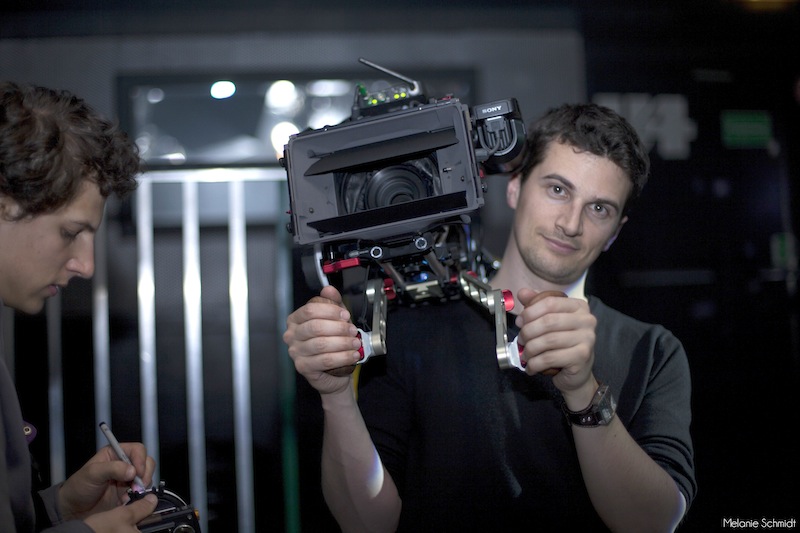

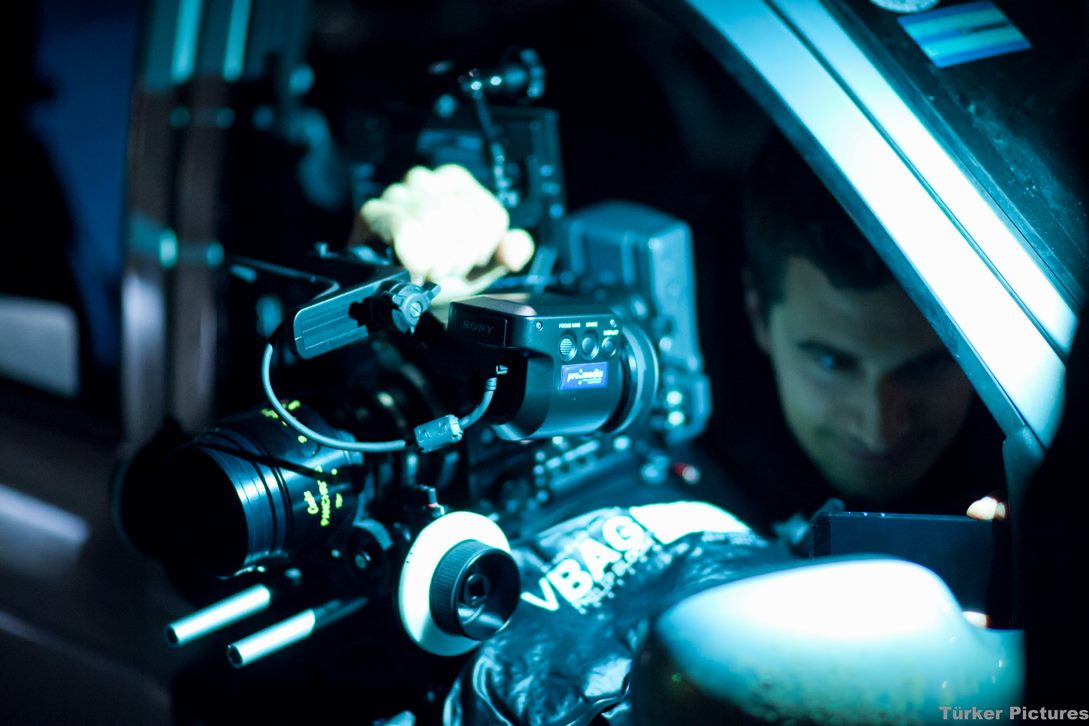
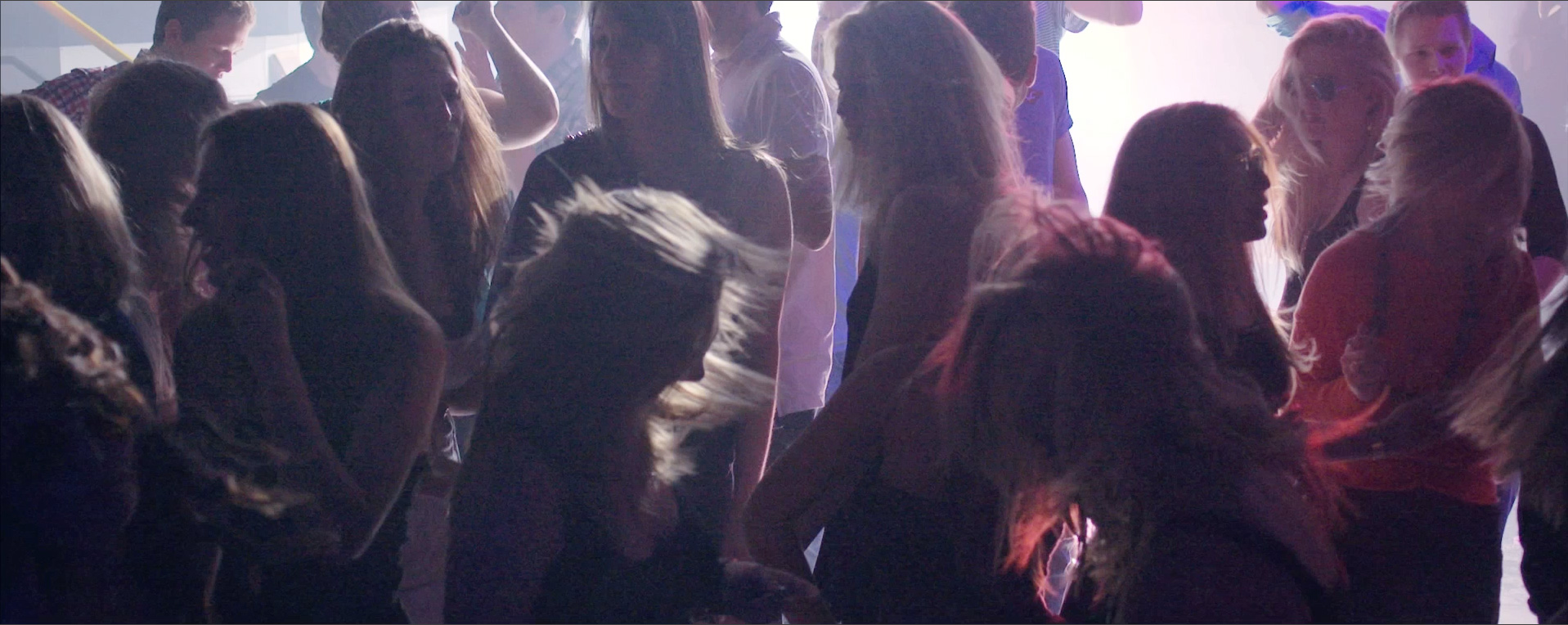
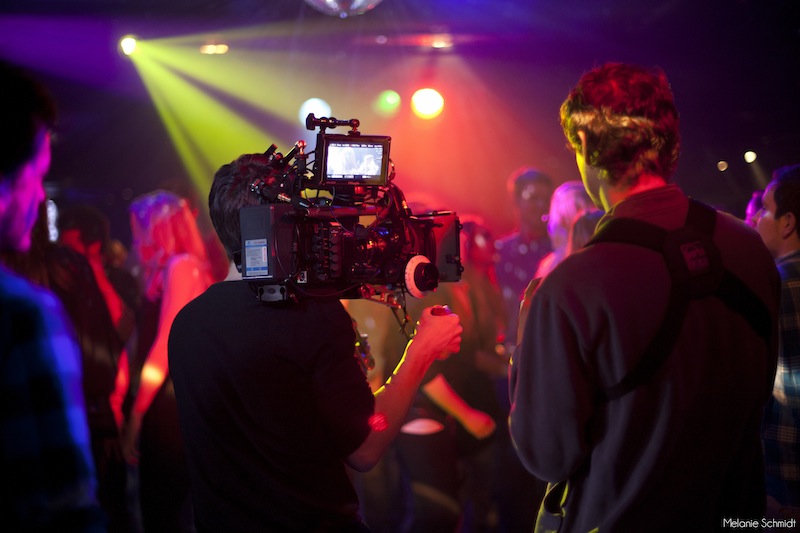
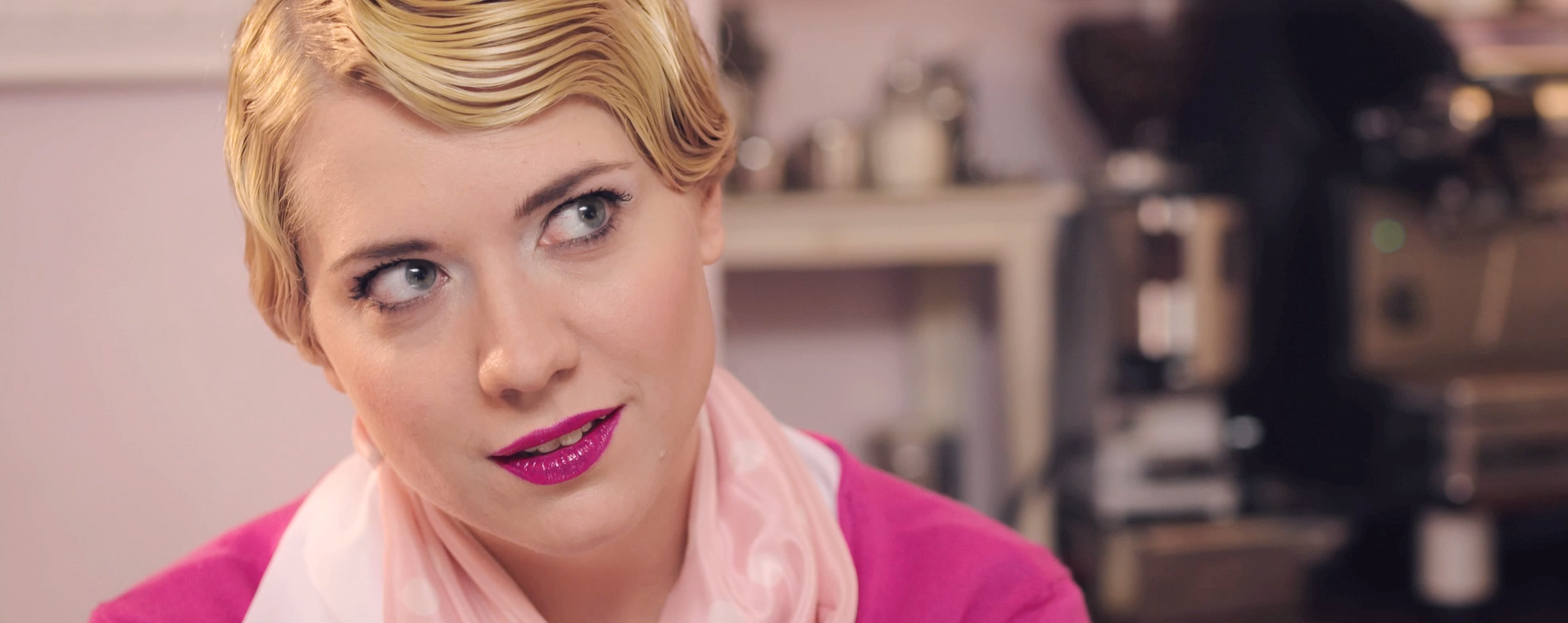
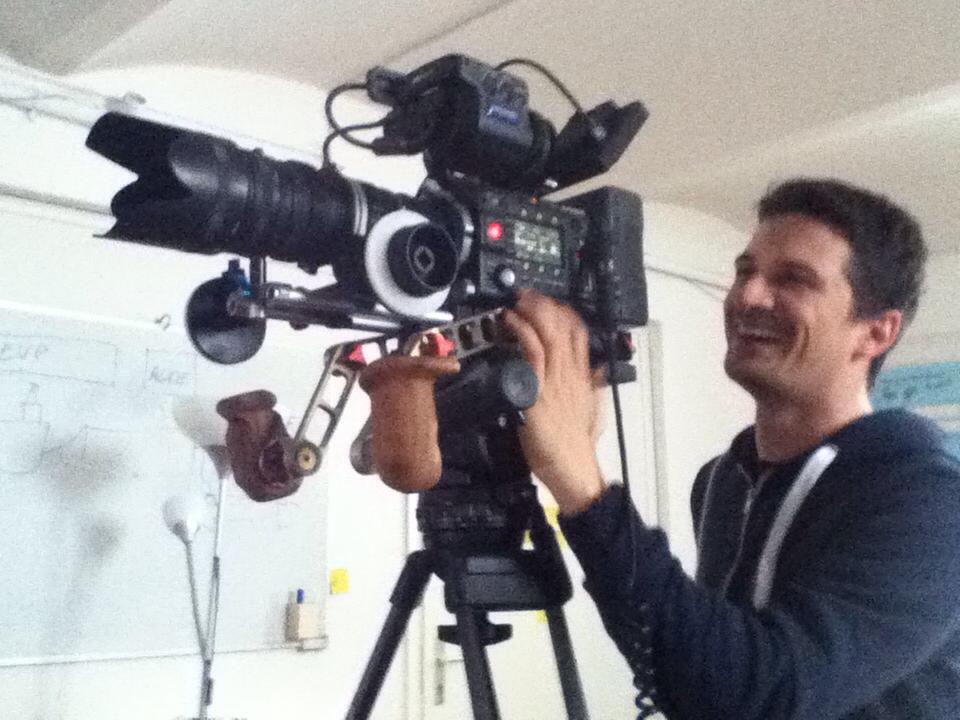
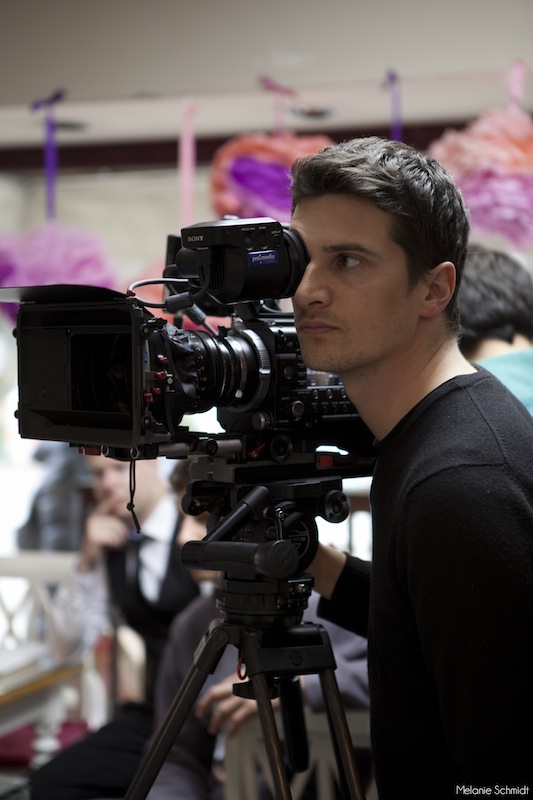

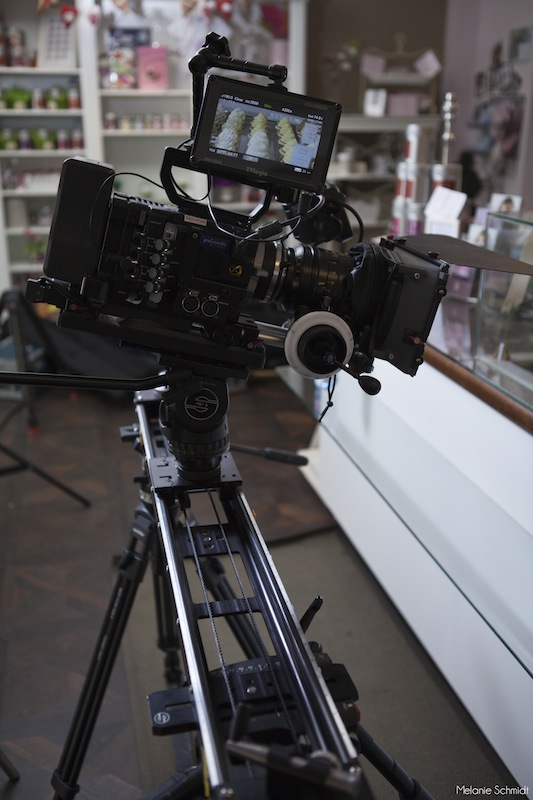
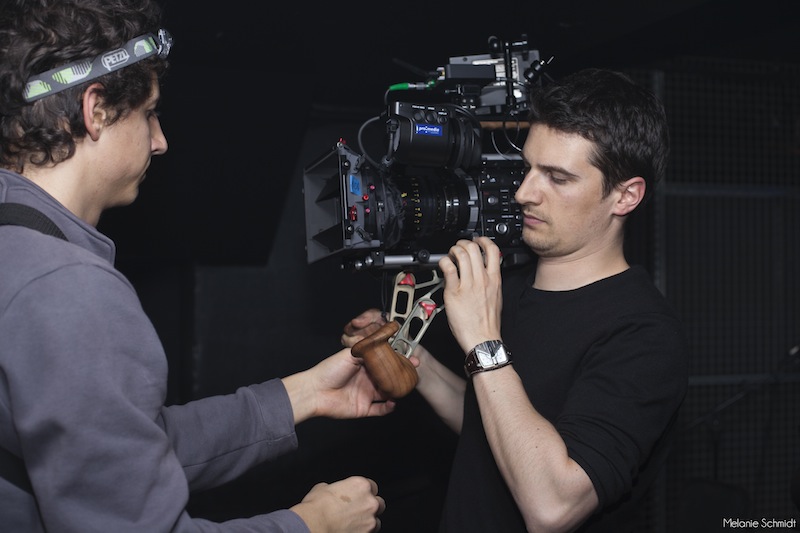





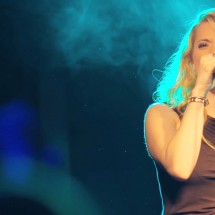


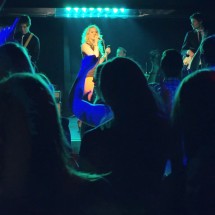
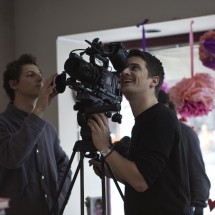
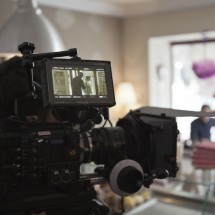
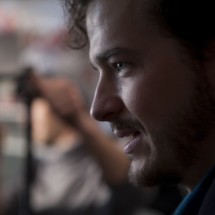
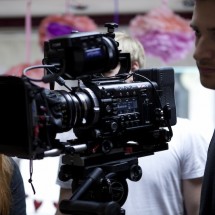
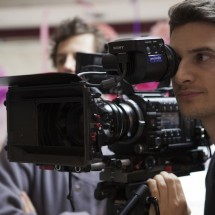
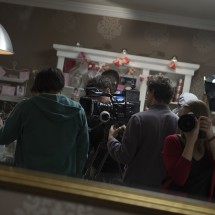
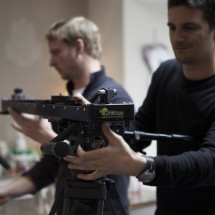
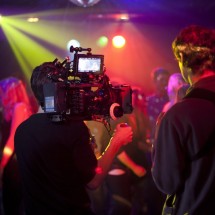
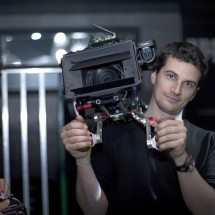


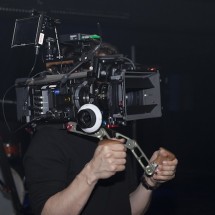
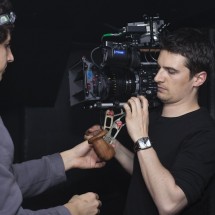
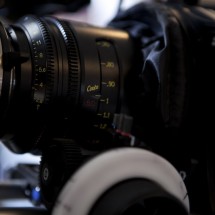
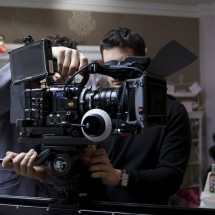
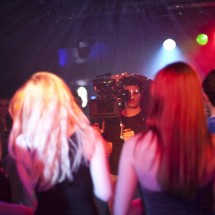
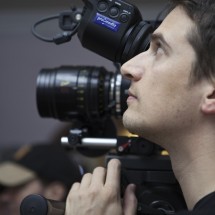

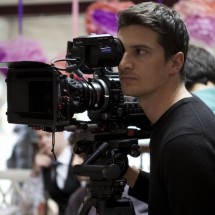

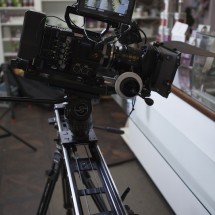
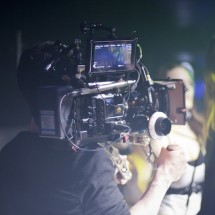
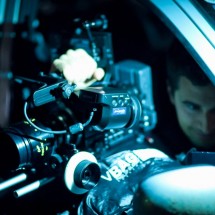
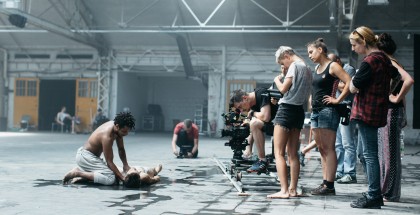
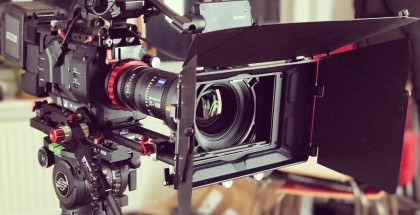
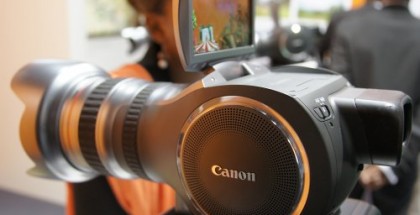
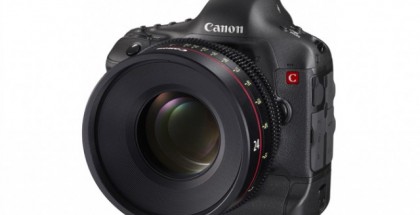


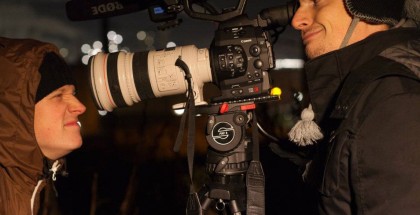
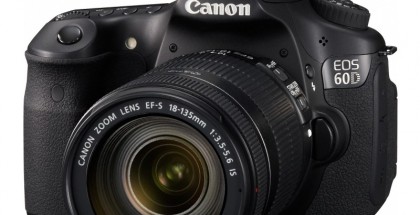












Comments